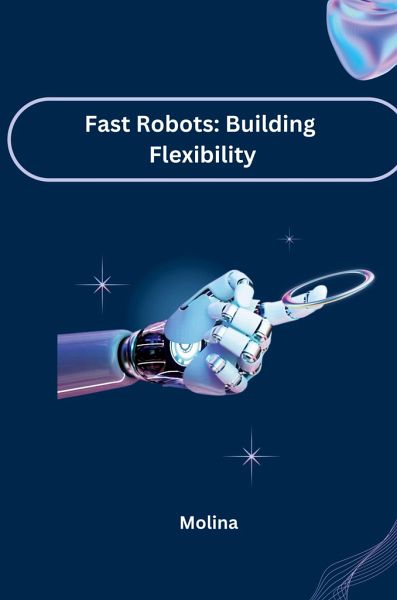
Fast Robots: Building Flexibility
Versandkostenfrei!
Versandfertig in 6-10 Tagen
26,49 €
inkl. MwSt.

PAYBACK Punkte
0 °P sammeln!
While cheetahs and falcons boast impressive speed, the needs of robots often push the boundaries of biological limitations. Imagine robots exceeding these natural marvels, traversing disaster zones or performing intricate surgery with lightning-fast precision. This is the world of fast robots, achieved through designs that break free from nature's template.Lightweight, high-powered actuators replace muscles, enabling rapid movements. Advanced materials defy the trade-off between strength and weight, allowing for nimble yet robust robots. Unlike biological systems, these machines can be modular...
While cheetahs and falcons boast impressive speed, the needs of robots often push the boundaries of biological limitations. Imagine robots exceeding these natural marvels, traversing disaster zones or performing intricate surgery with lightning-fast precision. This is the world of fast robots, achieved through designs that break free from nature's template.Lightweight, high-powered actuators replace muscles, enabling rapid movements. Advanced materials defy the trade-off between strength and weight, allowing for nimble yet robust robots. Unlike biological systems, these machines can be modular, with interchangeable components for specialized tasks.Sensors play a crucial role. Cameras with high frame rates capture fleeting moments, while advanced LiDAR (Light Detection and Ranging) paints a real-time picture of the environment. Processing power becomes paramount, with onboard computers analyzing sensory data and making split-second decisions to maintain stability and control at high speeds.The benefits are vast. Search and rescue robots could navigate collapsed buildings with unparalleled agility. Industrial robots could perform complex assembly lines at breakneck speeds, boosting productivity. Fast robots might even revolutionize space exploration, maneuvering through asteroid fields with unmatched dexterity.However, challenges remain. Energy consumption becomes a significant hurdle. Controlling these high-powered machines at such velocities demands sophisticated algorithms and robust safety measures. But with continued advancements, fast robots hold the potential to redefine the boundaries of what's possible, venturing far beyond the realm of the natural world.














